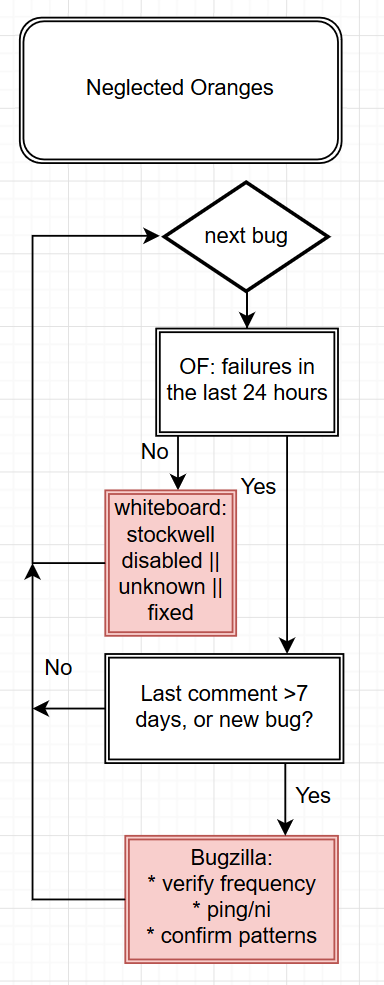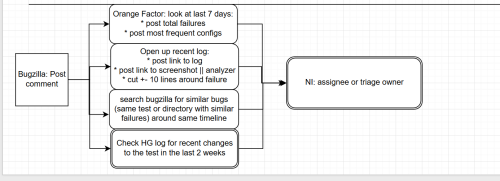About 8 months ago we started looking for a full time performance sheriff to help out with our growing number of alerts and needs for keeping the Talos toolchain relevant.
We got really lucky and ended up finding Ionut (:igoldan on irc, #perf). Over the last 6 months, Ionut has done a fabulous job of learning how to understand Talos alerts, graphs, scheduling, and narrowing down root causes. In fact, he has not only been able to easily handle all of the Talos alerts, Ionut has picked up alerts from Autophone (Android devices), Build Metrics (build times, installer sizes, etc.), AWSY (memory metrics), and Platform Microbenchmarks (tests run inside of gtest written by a few developers on the graphics and stylo teams).
While I could probably write a list of Ionut’s accomplishments and some tricky bugs he has sorted out, I figured your enjoyment of reading this blog is better spend on getting to know Ionut better, so I did a Q&A with him so we can all learn much more about Ionut.
Tell us about where you live?
I live in Iasi. It is a gorgeous and colorful town, somewhere in the North-East of Romania. It is full of great places and enchanting sunsets. I love how a casual walk
leads me to new, beautiful and peaceful neighborhoods.
I have many things I very much appreciate about this town:
the people here, its continuous growth, its historical resonance, the fact that its streets once echoed the steps of the most important cultural figures of our country. It also resembles ancient Rome, as it is also built on 7 hills.
It’s pretty hard not to act like a poet around here.
What inspired you to be a computer programmer?
I wouldn’t say I was inspired to be a programmer.
During my last years in high school, I occasionally consulted with my close ones. Each time we concluded that IT is just the best domain to specialize in: it will improve continuously, there will be jobs available; things that are evident nowadays.
I found much inspiration in this domain after the first year in college, when I noticed the huge advances and how they’re conducted. I understood we’re living in a whole new era. Digital transformation is now the coined term for what’s going on.
Any interesting projects you have done in the past (school/work/fun)?
I had the great opportunity to work with brilliant teams on a full advertising platform, from almost scratch.
It got almost everything: it was distributed, highly scalable, completely written in
Python 3.X, the frontend adopted material design, NoSQL database in conjunction with SQL ones… It used some really cutting-edge libraries and it was a fantastic feeling.
Now it’s Firefox. The sound name speaks for itself and there are just so many cool things I can do here.
What hobbies do you have?
I like reading a lot. History and software technology are my favourite subjects.
I enjoy cooking, when I have the time. My favourite dish definitely is the Hungarian goulash.
Also, I enjoy listening to classical music.
If you could solve any massive problem, what would you solve?
Greed. Laziness. Selfishness. Pride.
We can resolve all problems we can possibly encounter by leveraging technology.
Keeping non-values like those mentioned above would ruin every possible achievement.
Where do you see yourself in 10 years?
In a peaceful home, being a happy and caring father, spending time and energy with
my loved ones. Always trying to be the best example for them. I envision becoming a top notch professional programmer, leading highly performant teams on
sound projects. Always familiar with cutting-edge tech and looking to fit it in our tool set.
Constantly inspiring values among my colleagues.
Do you have any advice or lessons learned for new students studying computer science?
Be passionate about IT technologies. Always be curious and willing to learn about new things. There are tons and tons of very good videos, articles, blogs, newsletters, books, docs…Look them out. Make use of them. Follow their guidance and advice.
Continuous learning is something very specific for IT. By persevering, this will become your second nature.
Treat every project as a fantastic opportunity to apply related knowledge you’ve acquired. You need tons of coding to properly solidify all that theory, to really understand why you need to stick to the Open/Closed principle and all other nitty-gritty little things like that.
I have really enjoyed getting to know Ionut and working with him. If you see him on IRC please ping him and say hi 🙂




